We retreat for a day of rejuvenation at Green Hill Yatsugatake recreation facility in Yamanashi
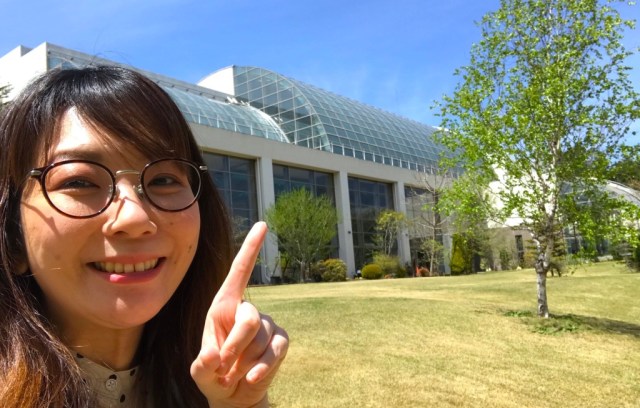
The rec facility is open to anyone for reservations and boasts grounds that are 7.5 times the size of Tokyo Dome.
Living in a major metropolitan area like Tokyo can be exhausting. Luckily, those who live, work, or study in Japan’s capital can score some impressive deals at certain hotels and recreation facilities whenever they need a bit of an escape. There are also several of these places that even non-residents can use. Today, our Japanese-language correspondent Mariko Ohanabatake would like to share her experience visiting one of these latter places in Hokuto City, Yamanashi Prefecture just to the west of Tokyo: Green Hill Yatsugatake.
Green Hill Yatsugatake recreation facility was established by Tokyo’s Shinjuku Ward in 1995 as a kind of “health village” for ward residents. The facility is open for anyone to use but there is a small extra charge for non-Shinjuku Ward residents.
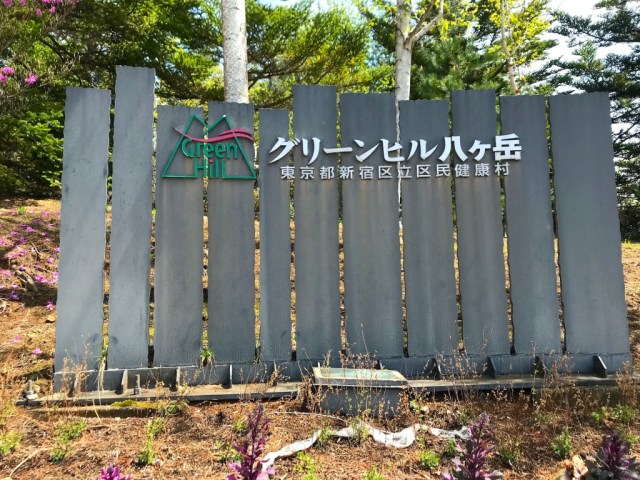
Its grounds are huge, clocking in at 7.5 times the size of the Tokyo Dome, and it offers an array of recreational activities and areas for visitors.
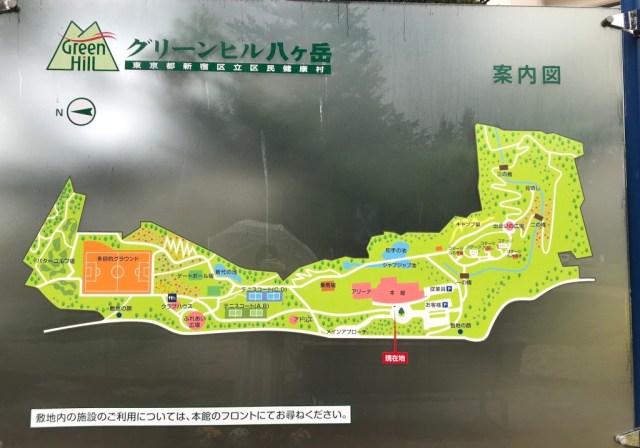
In particular, the grounds house numerous sports areas including tennis courts, pools, a fitness gym, and mini golf, as well as other areas to relax such as a karaoke room, campgrounds, a tea house, flower garden, and forest.
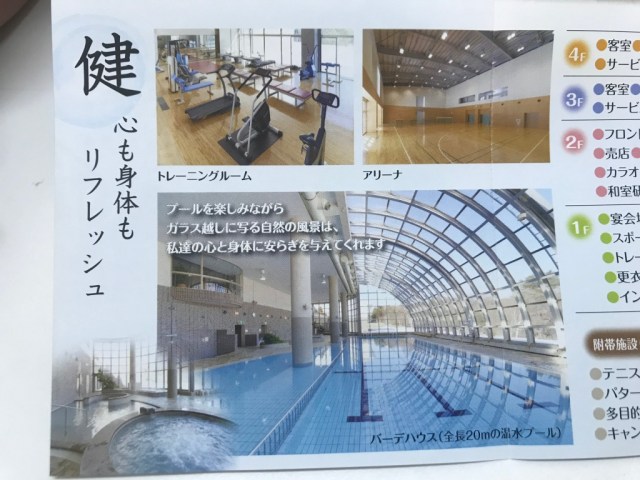
Guests can choose a Western-style room, Japanese-style room, or a cottage in the woods for their stay (the cottage requires a minimum of two people). A one-night stay for Shinjuku Ward residents includes two meals and rates are based on the capacity of the room, the number of people staying, and the day of the week. Regular weekday rates for adult residents of Shinjuku Ward begin at 6,000 yen (US$46.24) for rooms housing five or six adults and go up to 13,000 yen for a private room for one person (+1,500 yen for non-Shinjuku Ward residents). Rates for children aged 3-12 begin at 3,600 yen in any room (+1,000 yen for non-Shinjuku Ward residents). Prices are also higher during particularly busy travel weeks of the year such as Golden Week or New Year’s. In other words, it’s most economical to book a room with a small group of family members or friends on a regular weekday.
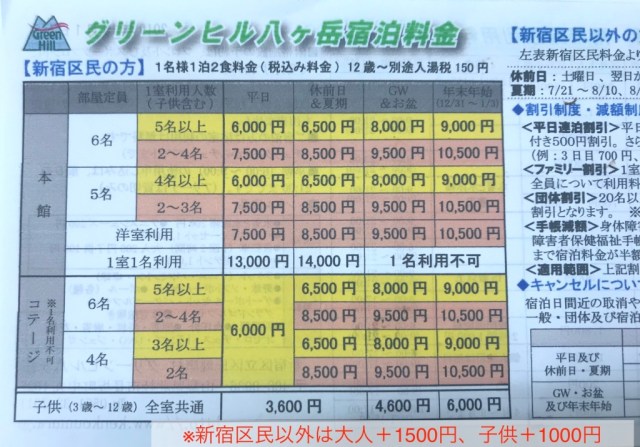
Getting to Green Hill is easy even if you don’t have a license–a shuttle bus will pick you up if you make reservations ahead of time. That’s exactly what Mariko did for the day of her stay.
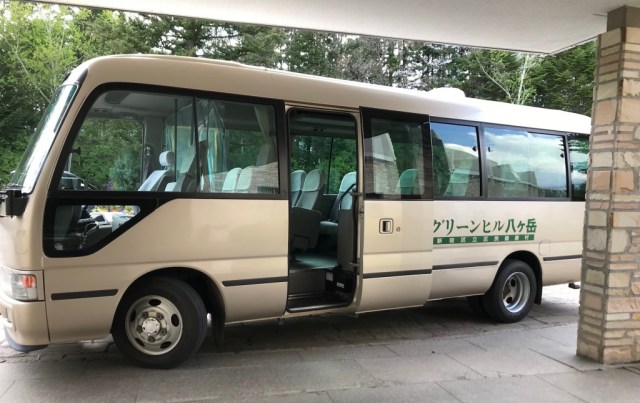
The bus services the nearby JR Nagasaka and Kobuchizawa Stations, the latter of which is served by the limited express Azusa train from Shinjuku Station (which takes about two hours to get there). It was the first time that Mariko had ever gone to Yamanashi and she realized just how easy it was to get there.

Once on the shuttle, it took about ten minutes from the station until the Green Hill Yatsugatake entrance came into view. There was then a little bit of a walk to the main building.
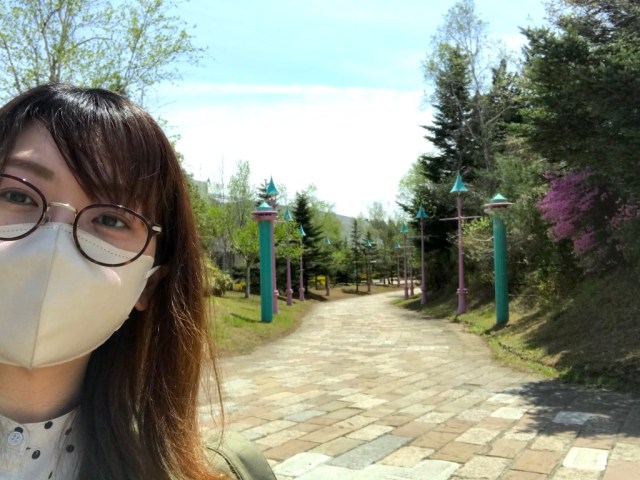
Stepping inside, she suddenly felt awash in a sense of nostalgia. It seemed like exactly the kind of place that she had stayed in during school field trips back in the ’90s. It wasn’t quite like a high-end hotel, but the interior looked more than adequate.

In front of the reception was an open-spaced lounge area with plenty of natural light and hints of green peeking inside. This area felt especially luxurious.
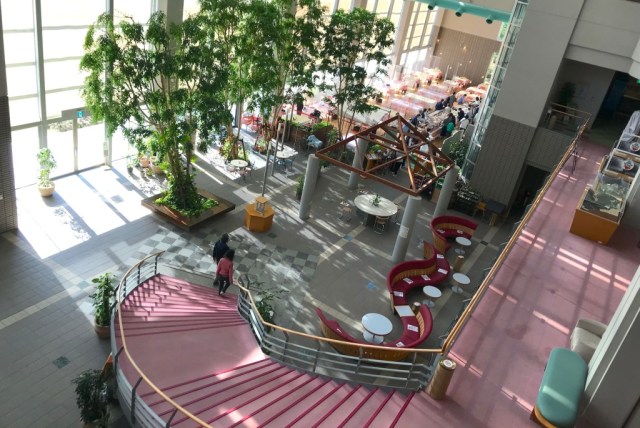
A noteworthy feature is the building’s deliberate conservation of energy. Lights in many of the spaces is purposely shut off around noontime.

The room that Mariko was staying in was a Western-style room for two. It was spacious and also had plenty of natural light.
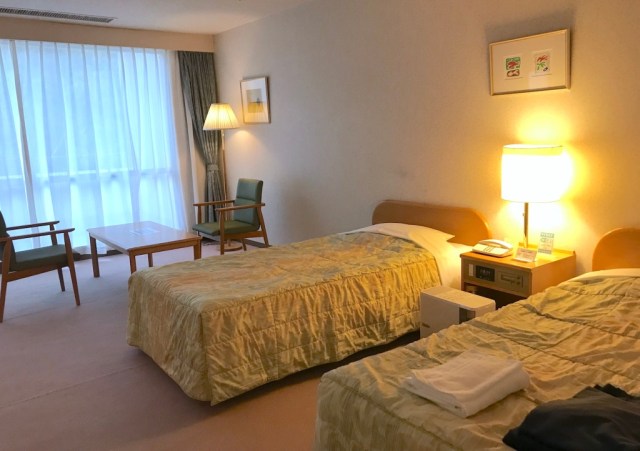
There were also teacups and little refreshments like you might find at a traditional Japanese ryokan inn. This little touch of hospitality made her smile.
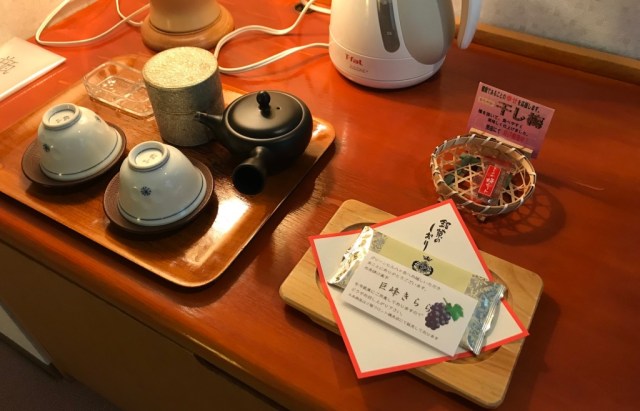
There are no baths/showers in the guestrooms but they do come with private bathrooms. She was also pleased to discover a humidifier device, which was another example of fine attention to detail.
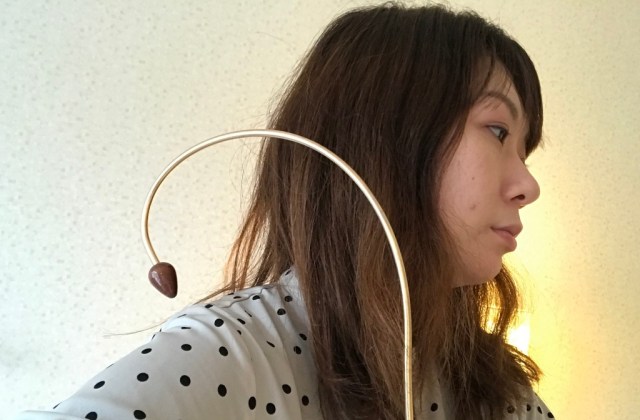
Once Mariko had checked out her sleeping quarters, she proceeded to explore the grounds. She was especially curious about the heated swimming pool so headed there first. The swimming area protruded out into the garden in a greenhouse-style glass addition.
She ended up taking a swim before dinner and discovered the following impressive variety of features:
● Three-lane pool for adults
● Pool for kids
● Waterfall shower pool
● Lie-down pool
● Two types of jacuzzis
● Mist sauna
● Cold-water pool
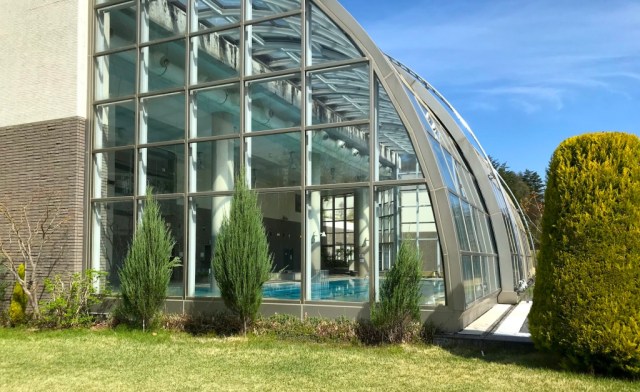
The sunshine flooding in added a special warmth to the experience. There weren’t that many people there, and the sounds of people splashing with kickboards punctuated the space. If you got cold you could hop into the mist sauna or a jacuzzi and then get right back to swimming.

After swimming, Mariko had sure worked up a sweat…and a hunger. She was initially startled by the number of guests gathered in the dining room, even on a weeknight. There seemed to be a high proportion of older folks in particular.
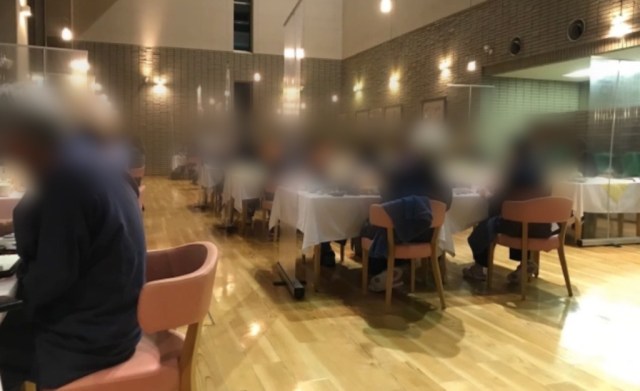
Dinner was traditional Japanese-style with numerous small dishes. The pickled dishes, sashimi, and a little hot pot all resembled the type of meal you’d be served at a ryokan. You could even select your main dish from among five choices.
It had been a while since she had eaten so many vegetables and fish all at once. Perhaps due to the “health village” concept, there was very little fatty food, and she felt pleasantly full in a good way after finishing her meal.
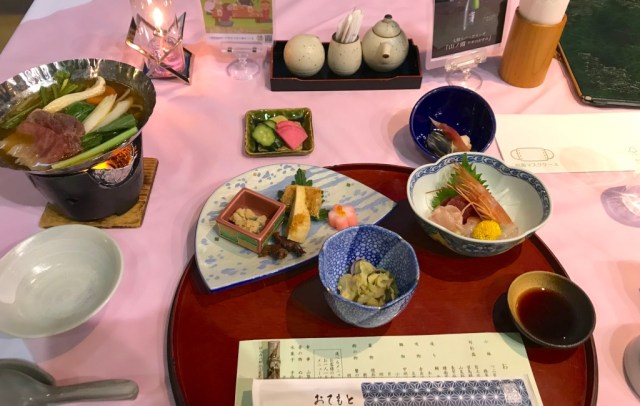
Next up to explore was the little gym inside the building with attached onsen (hot spring bath).
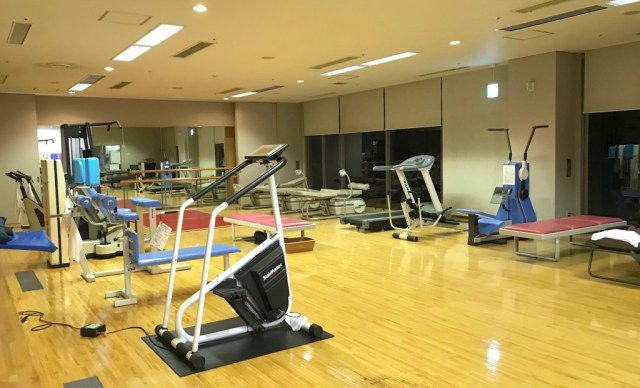
There were both exercise machines and the kind of machines used for rehabilitation.
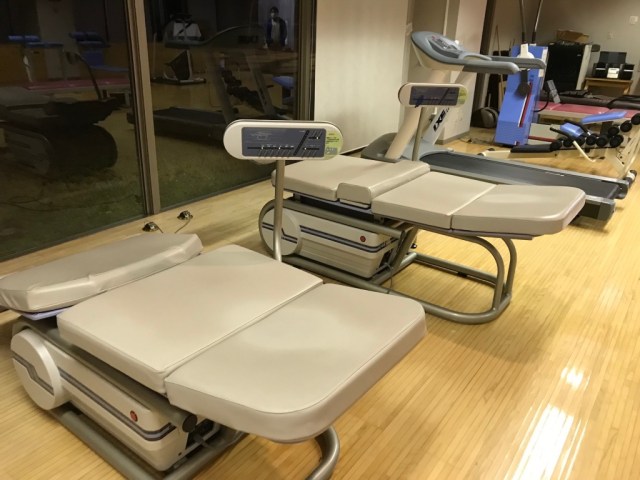
The long-awaited onsen was small but legitimate.
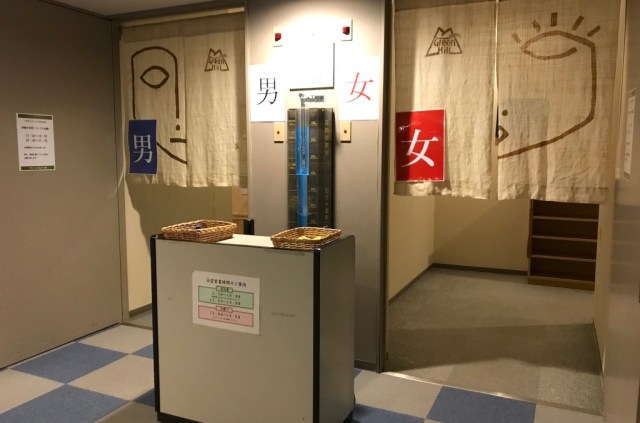
In addition to a cold-water bath, all of the following types of onsen were present:
● Regular-temperature bath
● Pressure bath
● Open-air bath
● Dry sauna
The best part was that guests could switch back and forth between them all to their hearts’ content–which she took full advantage of.
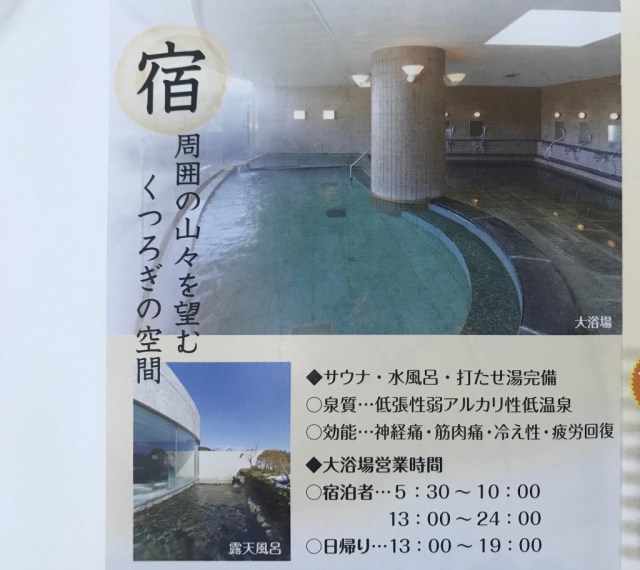
All in all, Mariko enjoyed the open-air bath at night the most. She could see the whole starry sky laid out above her, and the cool breeze from the mountains felt perfect against the hot water.
By the way, the reception desk closes at 11 p.m. and the onsen are open until midnight. Night owls should take this as a sign to maybe go to bed earlier than usual and get a true full night’s rest. Once she had lain down on her bed, Mariko took a moment to reflect on her day. She had swum in the pool, eaten a deliciously wholesome meal, worked out a bit in the gym, relaxed in the onsen and sauna, gazed at the night sky from the open-air bath, and climbed into bed before the date had changed.
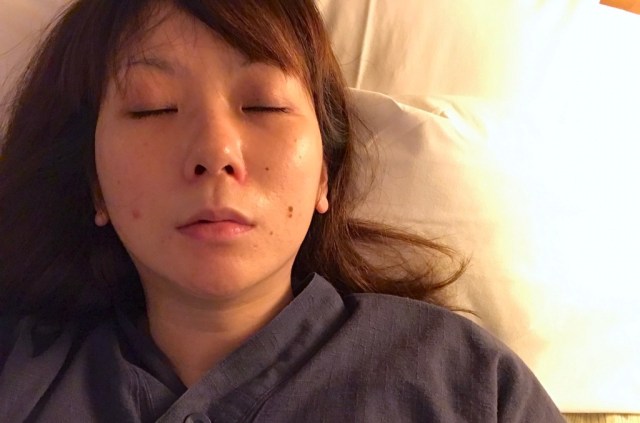
What a fulfilling day! Wasn’t this how people were supposed to live regularly? Her lonely, always-in-a-hurry lifestyle in Tokyo felt so far away at this moment. Sweet dreams, Mariko.
The next morning she woke up nice and early. Opening the curtains, sunlight and greenery flooded her eyes.
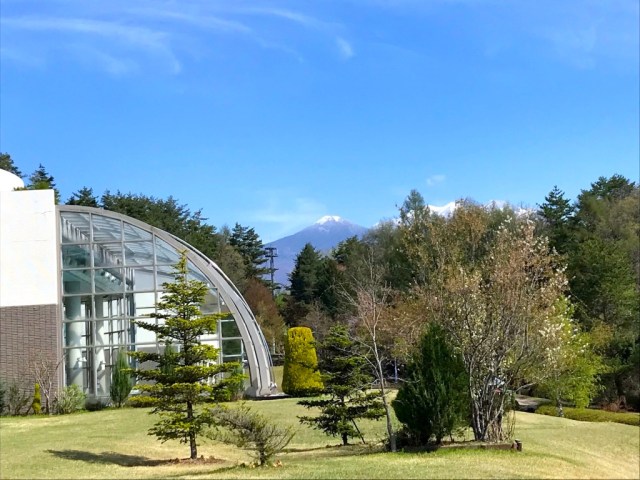
She stood on the wide veranda, listening to birds and stretching to some radio calisthenics.
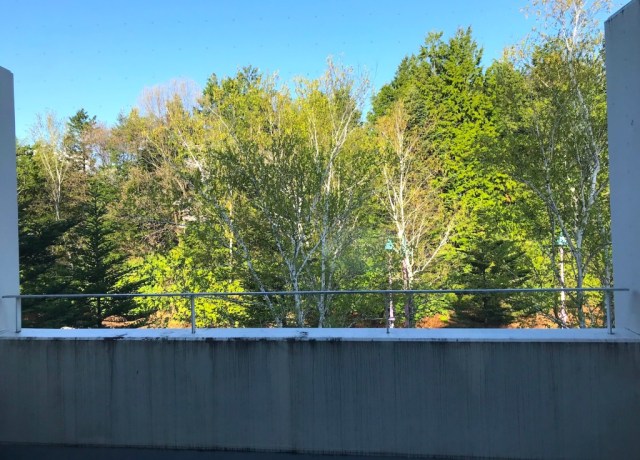
The Western-style breakfast was served buffet-style.
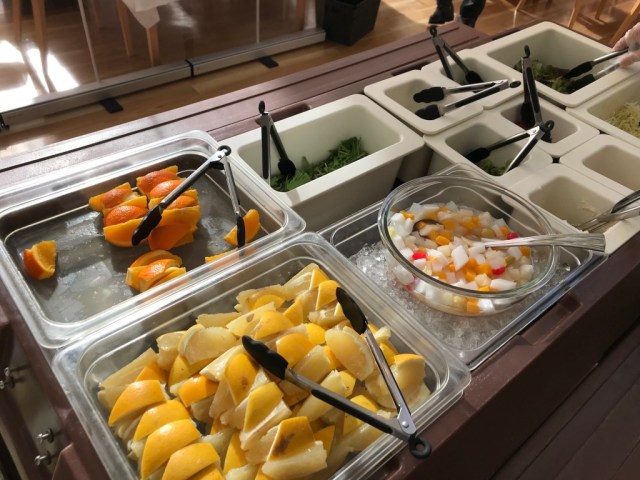
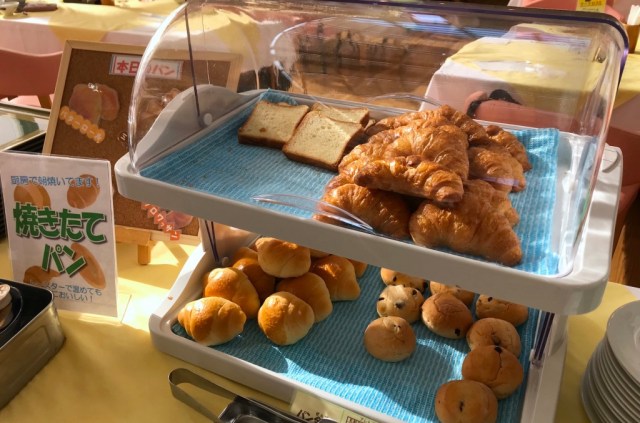
The freshly baked bread, homemade fruit juice, and fresh salad with ham were more than satisfying, and the addition of edible wild mountain greens added the perfect traditional Japanese complement to the mix.
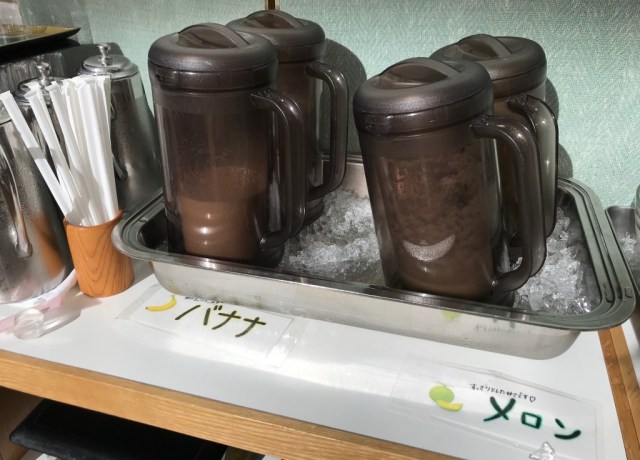
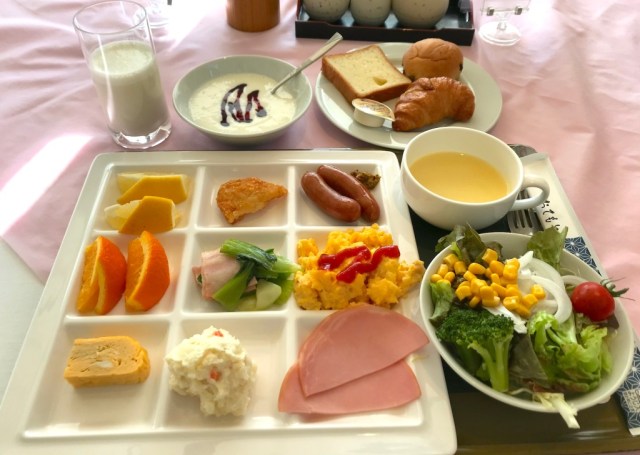
After her breakfast, she decided to explore the massive grounds by doing a little forest bathing.
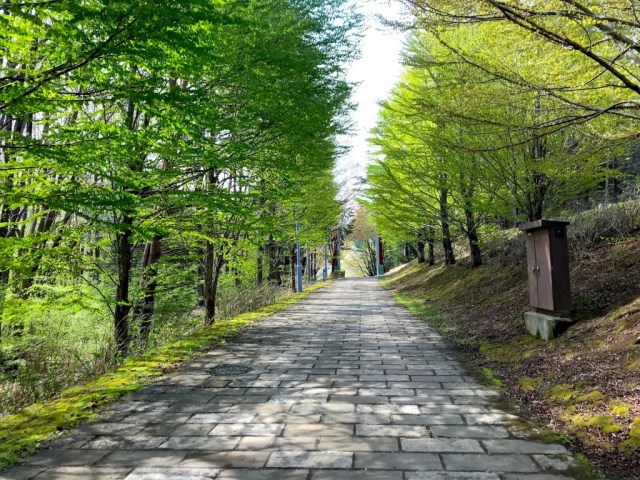
The fresh air and gentle breeze were extremely soothing. She could also hear birds singing and from farther away, cows mooing!
Before long, she came upon the cottages in the woods for reservation.
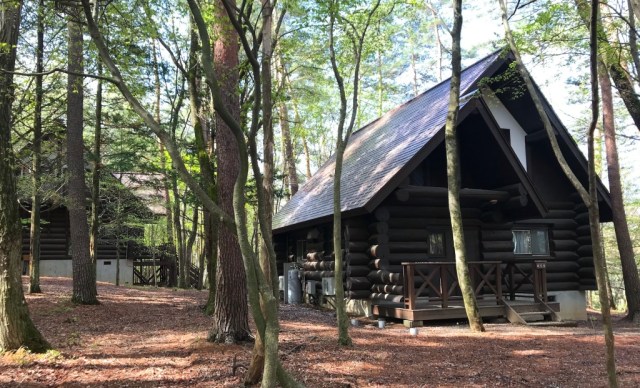
She thought it would be fun to visit this place again and stay in one of these with friends.
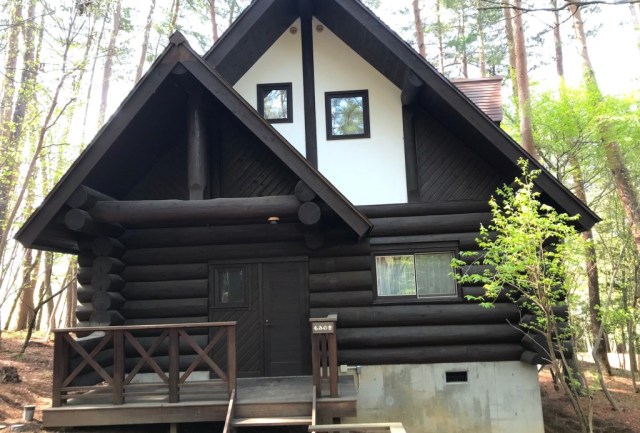
Until now, the phrase “delicious air” had never really made sense to her, but she thought she might finally understand what that meant.
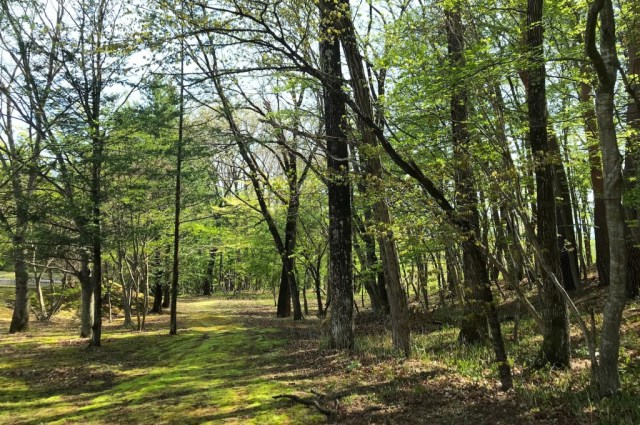
By the way, the Kiyoharu Art Colony is only a ten-minute walk away.
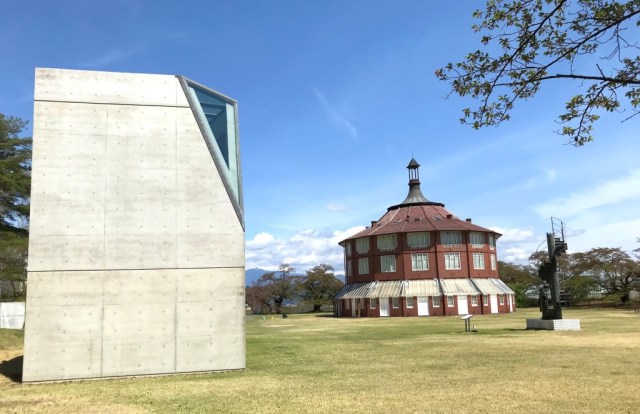
It features structures such as the “Art Museum of Light” by Japanese architect Tadao Ando and works by Japanese artist Taro Okamoto.
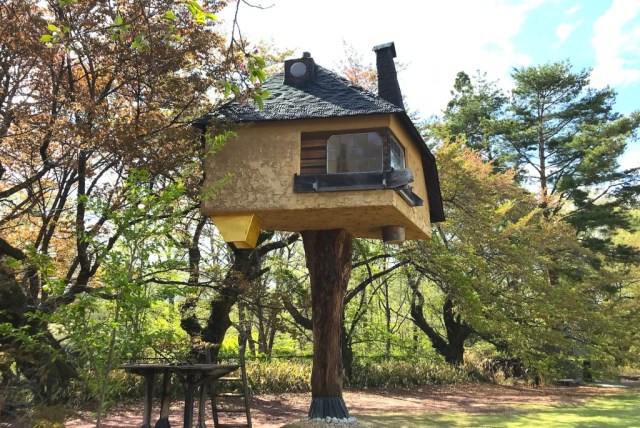
Mariko spent the rest of the morning as leisurely as possible in the pool and onsen again, right up until she had to check out at 11 a.m. The view from the open-air onsen of the green forest stretching out below towards Japan’s Southern Alps was quite different from the night but equally as lovely.

Thanks to the onsen, her body felt pleasantly warm and rejuvenated afterwards. She further relaxed by enjoying a bottle of Yatsugatake’s own coffee milk.
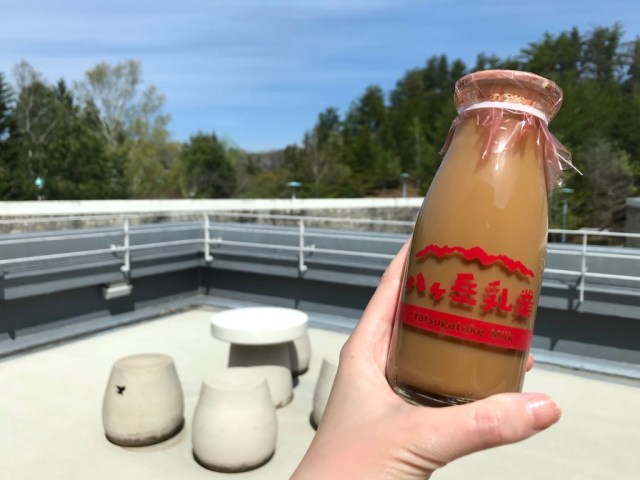
Once again, she couldn’t believe that she had traveled only two hours from the hustle and bustle of Shinjuku to arrive at a natural place where there was plenty of open forest, mountains, stars, wind, and birds singing.
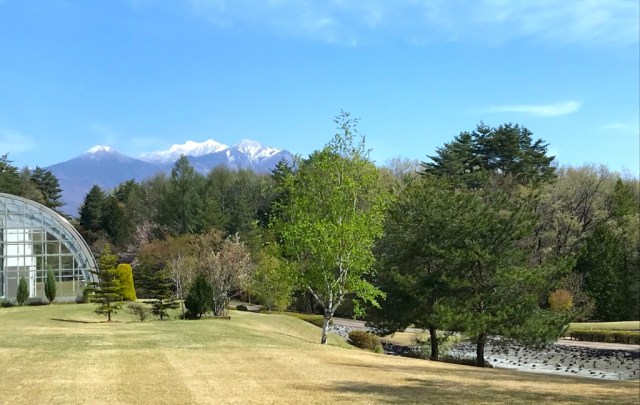
The only downside to booking a stay might be the slightly troublesome reservation process. A lottery-style postcard reservation service started for residents of Shinjuku Ward three months ago. One month later, non-Shinjuku Ward residents became able to reserve any remaining spaces by calling the Shinjuku Ward recreation facility office. Further instructions are available on the Shinjuku Ward homepage and room vacancies can be checked here.
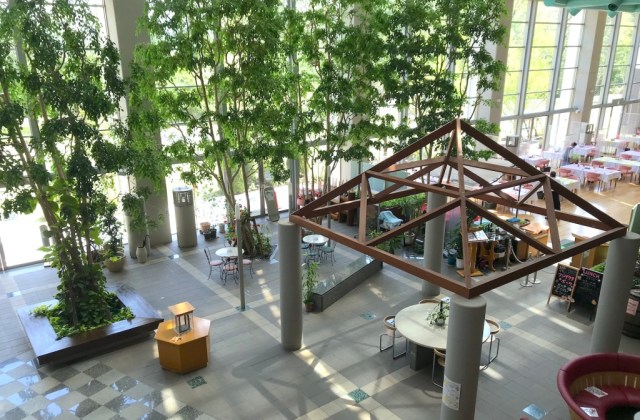
Reservation hassles aside, however, Mariko absolutely recommends a visit to Green Hill Yatsugatake for anyone to refresh their mind and body. She’ll definitely be making a return visit–and in the meantime, trying to recreate a sliver of the peace she experienced in the big city at Shibuya’s Miyashita Park.
Related: Green Hill Yatsugatake, Shinjuku Ward homepage
All images © SoraNews24
● Want to hear about SoraNews24’s latest articles as soon as they’re published? Follow us on Facebook and Twitter!
Credit:

0 comments:
Post a Comment